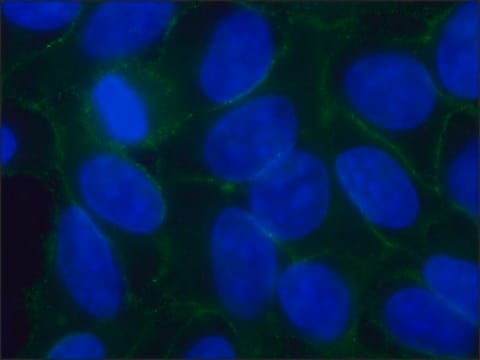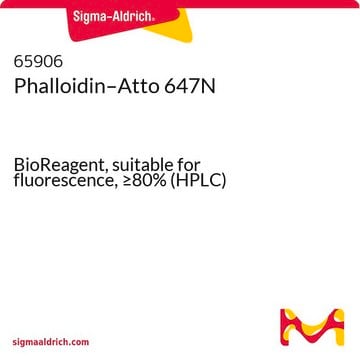C3678
Anti-Pan Cadherin antibody produced in rabbit
whole antiserum
Synonim(y):
Anti-ACOGS, Anti-ARVD14, Anti-CD325, Anti-CDHN, Anti-CDw325, Anti-NCAD
About This Item
Polecane produkty
pochodzenie biologiczne
rabbit
białko sprzężone
unconjugated
forma przeciwciała
whole antiserum
rodzaj przeciwciała
primary antibodies
klon
polyclonal
masa cząsteczkowa
antigen 135 kDa
zawiera
15 mM sodium azide
reaktywność gatunkowa
rabbit, cat, chicken, human
metody
immunohistochemistry (formalin-fixed, paraffin-embedded sections): 1:1,000 using protease-digested animal heart sections
indirect immunofluorescence: 1:100 using cultured MDBK cells
western blot: 1:200
numer dostępu UniProt
Warunki transportu
dry ice
temp. przechowywania
−20°C
docelowa modyfikacja potranslacyjna
unmodified
informacje o genach
chicken ... CDH2(414745)
Opis ogólny
Specyficzność
Immunogen
Zastosowanie
Oświadczenie o zrzeczeniu się odpowiedzialności
Not finding the right product?
Try our Narzędzie selektora produktów.
Kod klasy składowania
12 - Non Combustible Liquids
Klasa zagrożenia wodnego (WGK)
nwg
Temperatura zapłonu (°F)
Not applicable
Temperatura zapłonu (°C)
Not applicable
Certyfikaty analizy (CoA)
Poszukaj Certyfikaty analizy (CoA), wpisując numer partii/serii produktów. Numery serii i partii można znaleźć na etykiecie produktu po słowach „seria” lub „partia”.
Masz już ten produkt?
Dokumenty związane z niedawno zakupionymi produktami zostały zamieszczone w Bibliotece dokumentów.
Nasz zespół naukowców ma doświadczenie we wszystkich obszarach badań, w tym w naukach przyrodniczych, materiałoznawstwie, syntezie chemicznej, chromatografii, analityce i wielu innych dziedzinach.
Skontaktuj się z zespołem ds. pomocy technicznej








